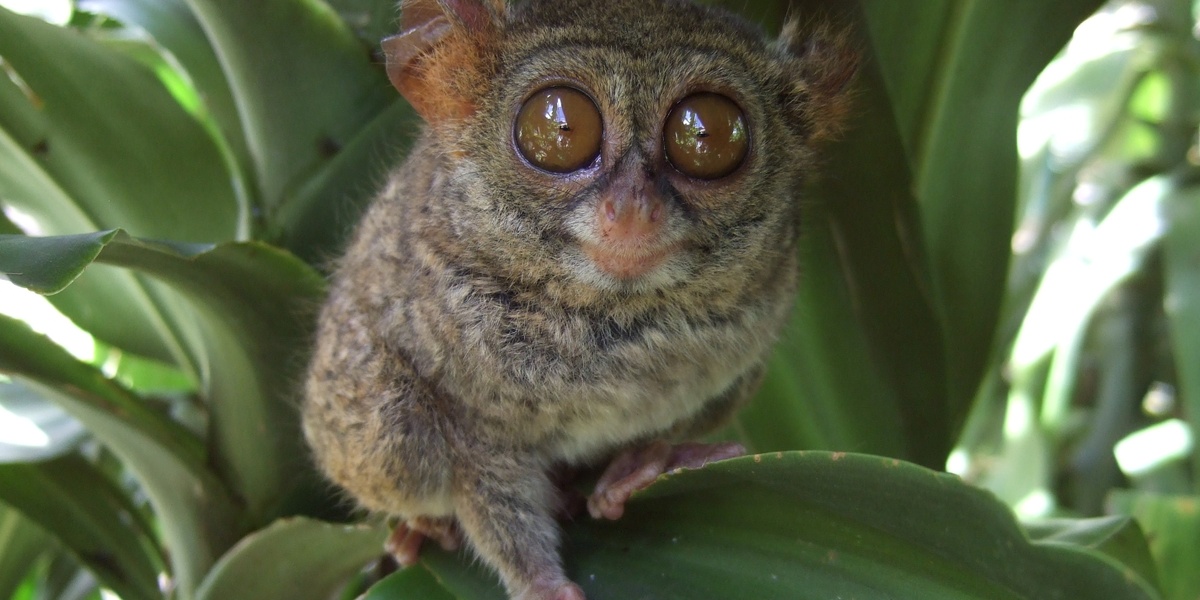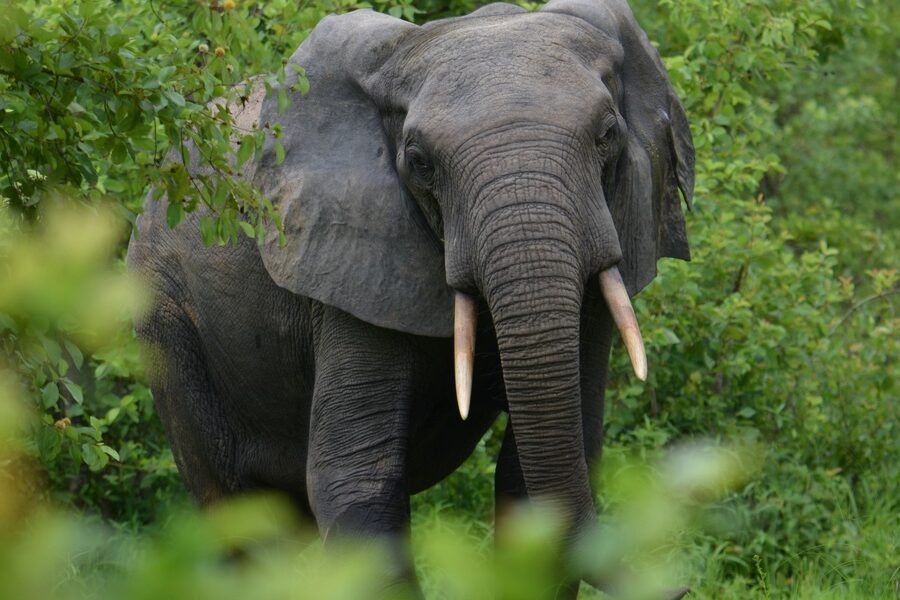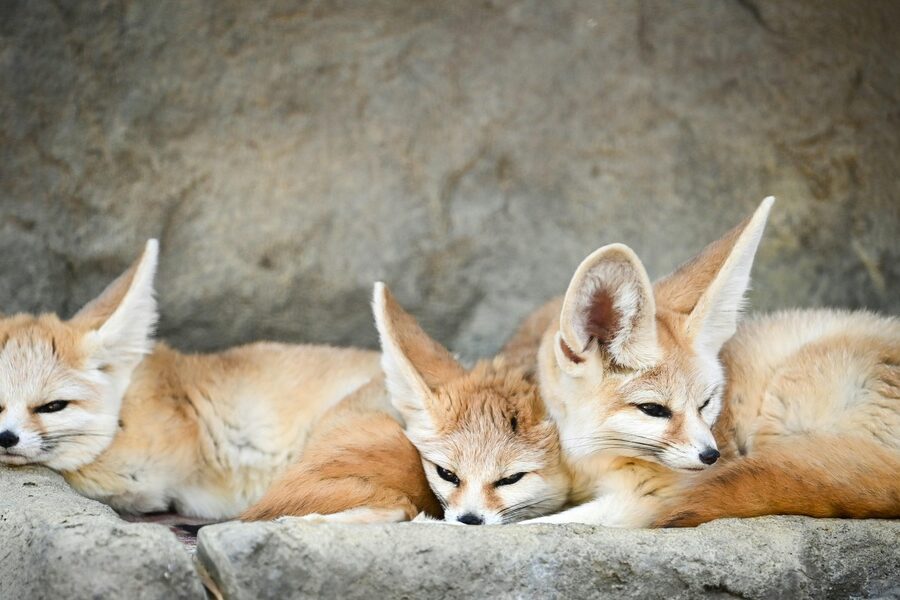In tropical rainforests the day’s bustle quiets and a different cast of creatures takes over: slow climbers, silent hunters and animals that use sound, smell or touch more than sight. Night shifts through the canopy and understory reveal specialized behaviors shaped by dim light, humidity and dense vegetation.
There are 30 nocturnal rainforest animals, ranging from Aye-aye to Two-toed Sloth. For each species we list the Scientific name,Size (kg/cm) & range,Nocturnal adaptation, which you’ll find below.
How do these animals find food and navigate without much light?
Many rely on non-visual senses—echolocation (bats), enhanced hearing (owls), sensitive whiskers or long fingers (aye-aye) and keen smell—to locate prey or food; others slow their movements and use camouflage or scent marks to move safely through dense vegetation at night.
Are night-active rainforest species at greater risk from human activities?
Yes; habitat loss, light pollution and hunting can disproportionately affect nocturnal species because they often need large, connected territories and rely on undisturbed dark habitats; conserving intact forest and reducing nighttime disturbance helps protect them.
Nocturnal Rainforest Animals
| Name | Scientific name | Size (kg/cm) & range | Nocturnal adaptation |
|---|---|---|---|
| Kinkajou | Potos flavus | 2-4.5 kg, 40-60 cm | Prehensile tail and sharp senses for navigating canopy at night. |
| Ocelot | Leopardus pardalis | 8-15 kg, 60-100 cm | Excellent night vision and hearing for stalking prey in low light. |
| Two-toed Sloth | Choloepus didactylus | 4-8 kg, 58-70 cm | Slow metabolism and deliberate movement conserves energy during nighttime foraging. |
| Aye-aye | Daubentonia madagascariensis | 2.5 kg, 30-40 cm | Elongated, thin middle finger used for percussive foraging on trees. |
| Philippine Tarsier | Carlito syrichta | 80-160 g, 8-16 cm | Enormous eyes, relative to body size, provide exceptional night vision. |
| Owl Monkey | Aotus trivirgatus | 0.7-1.2 kg, 24-37 cm | The only truly nocturnal monkey, with large eyes to see in the dark. |
| Jaguar | Panthera onca | 55-95 kg, 1.2-1.9 m | Powerful jaws and stealthy movement make it a formidable nocturnal ambush predator. |
| Paca | Cuniculus paca | 6-14 kg, 60-80 cm | Keen sense of smell and hearing to detect predators while foraging. |
| Binturong | Arctictis binturong | 10-20 kg, 60-95 cm | Scent marking with a unique popcorn-like odor to communicate in darkness. |
| Common Vampire Bat | Desmodus rotundus | 15-50 g, 7-9 cm | Infrared sensors in its nose detect warm-blooded prey in total darkness. |
| Spectacled Owl | Pulsatrix perspicillata | 600-950 g, 43-52 cm | Asymmetrical ear openings allow for precise sound localization of prey. |
| Great Potoo | Nyctibius grandis | 500-650 g, 48-60 cm | Incredible camouflage allows it to mimic a dead tree branch while resting. |
| Red-eyed Tree Frog | Agalychnis callidryas | 6-15 g, 5-7 cm | Brightly colored eyes and body startle predators when revealed at night. |
| Emerald Tree Boa | Corallus caninus | 1-1.5 kg, 1.8 m | Heat-sensing pits along its jaw detect the body heat of prey. |
| Goliath Birdeater | Theraphosa blondi | Up to 175 g, 30 cm leg span | Sensitive hairs on its body detect vibrations from approaching prey or threats. |
| Sunda Slow Loris | Nycticebus coucang | 600-900 g, 26-38 cm | A reflective layer in its large eyes (tapetum lucidum) enhances night vision. |
| Margay | Leopardus wiedii | 2.5-4 kg, 45-80 cm | Extremely flexible ankles can rotate 180 degrees for climbing down trees head-first. |
| Southern Tamandua | Tamandua tetradactyla | 3.5-8.5 kg, 53-88 cm | Powerful claws and a keen sense of smell to tear open insect nests. |
| Nine-banded Armadillo | Dasypus novemcinctus | 2.5-6.5 kg, 38-58 cm | Acute sense of smell helps locate insects and grubs underground. |
| Glass Frog | Hyalinobatrachium fleischmanni | 2-3 g, 2-3 cm | Translucent skin on its underside provides camouflage against leaves. |
| Satanic Leaf-tailed Gecko | Uroplatus phantasticus | 10-30 g, 6-15 cm | Flattened body and tail perfectly mimic a dead, decaying leaf. |
| Oilbird | Steatornis caripensis | 350-475 g, 40-49 cm | Navigates and finds fruit in total darkness using echolocation clicks. |
| Clouded Leopard | Neofelis nebulosa | 11-23 kg, 60-110 cm | Longest canine teeth relative to body size of any living cat. |
| Goodfellow’s Tree-kangaroo | Dendrolagus goodfellowi | Around 7 kg, 55-75 cm | Powerful hind legs adapted for leaping between branches in the dark. |
| Hammer-headed Bat | Hypsignathus monstrosus | 220-450 g, 97 cm wingspan | Males produce extremely loud, honking calls to attract females at night. |
| Luna Moth | Actias luna | 3-5 g, 11-12 cm wingspan | Long tails on hindwings may confuse bat echolocation, acting as a defense. |
| Fer-de-Lance | Bothrops atrox | Up to 3 kg, 1.2-1.5 m | Highly sensitive heat-pitting organs detect prey with thermal vision. |
| Kākāpō | Strigops habroptilus | 2-4 kg, 58-64 cm | Well-developed sense of smell to find food in the forest at night. |
| Common Spotted Cuscus | Spilocuscus maculatus | 1.5-6 kg, 35-65 cm | Large eyes and a prehensile tail for securely navigating treetops. |
| Green Tree Python | Morelia viridis | 1-1.5 kg, 1.5-2 m | Coils on a branch with its head hanging low to ambush passing prey. |
Images and Descriptions

Kinkajou
Often mistaken for a monkey, this arboreal mammal uses its long tongue to eat fruit and nectar. It lives in the canopies of Central and South American rainforests, often traveling in small groups called troops.
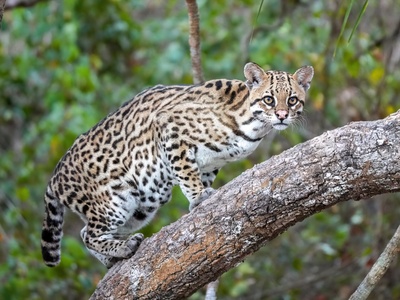
Ocelot
A medium-sized wild cat with a beautifully spotted and striped coat providing camouflage. It roams the forest floor across the Americas, hunting rodents, birds, and reptiles under the cover of darkness. Its population is threatened by habitat loss.
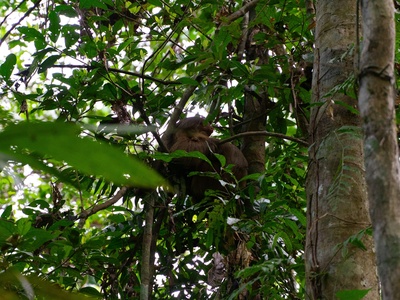
Two-toed Sloth
This incredibly slow-moving mammal spends nearly its entire life upside down in the trees of Central and South American rainforests. Unlike its three-toed cousins, it is almost exclusively active at night, feeding on leaves.
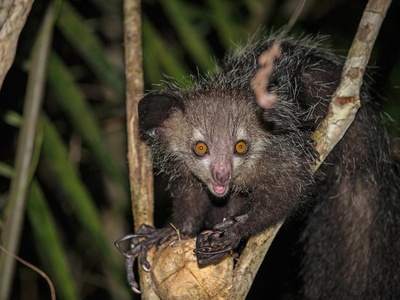
Aye-aye
A unique lemur from Madagascar’s rainforests, the aye-aye taps on trees to find insect larvae. It then gnaws a hole with its rodent-like teeth and extracts the grubs with its specialized skinny finger.
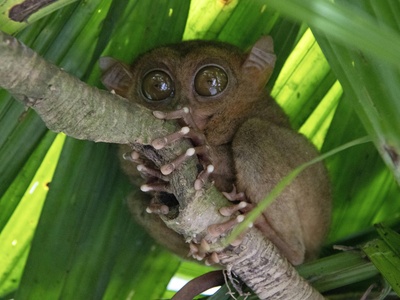
Philippine Tarsier
This tiny primate from the rainforests of the Philippines has eyes so large they cannot rotate; instead, it can turn its head nearly 180 degrees. It leaps between trees to hunt for insects at night.
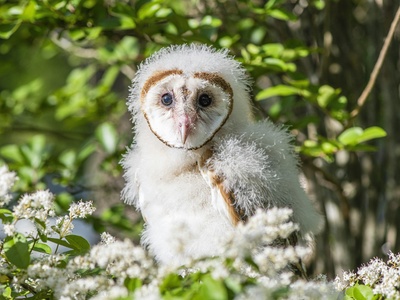
Owl Monkey
Also known as night monkeys, these primates live in the Amazon rainforest. They have monochromatic vision, which enhances their ability to see in low-light conditions, and live in small, monogamous family groups that defend territories with loud calls.
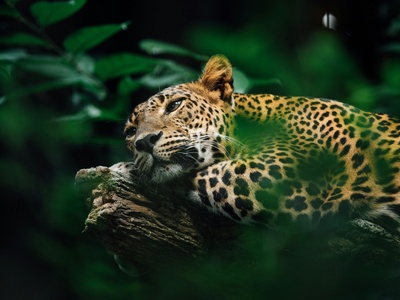
Jaguar
The largest cat in the Americas, the jaguar is an apex predator in rainforests from Mexico to Argentina. It often hunts at night, using its immense strength to take down prey like capybaras, deer, and even caimans.
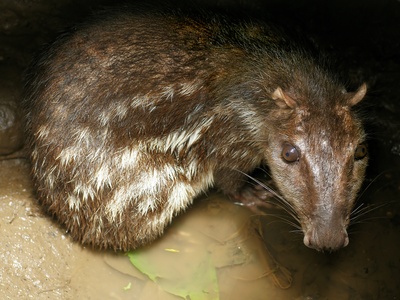
Paca
A large rodent from Central and South American rainforests, the paca is recognized by its spotted coat. It is a solitary forager that emerges at night to eat fruits, leaves, and tubers near water sources.
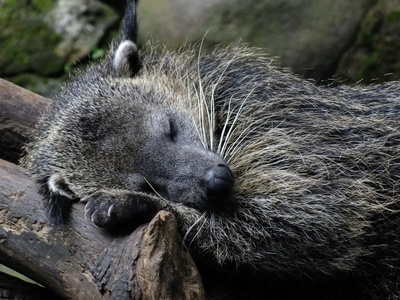
Binturong
Known as the bearcat, this mammal from Southeast Asian rainforests has a prehensile tail and shaggy black fur. It moves slowly through the canopy at night, feeding mainly on fruit, and is classified as Vulnerable due to habitat destruction.
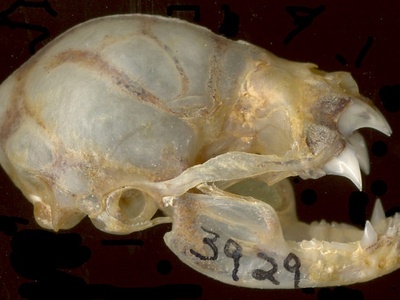
Common Vampire Bat
This infamous bat from the Americas is a sanguivore, feeding solely on blood. It uses sharp incisors to make a small incision in sleeping mammals or birds and then laps up the blood with its tongue.
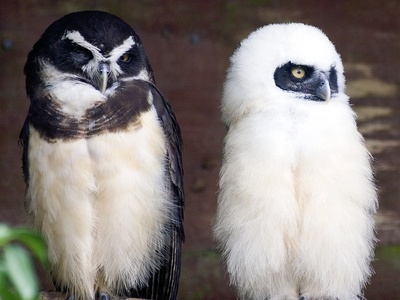
Spectacled Owl
A large, charismatic owl of Central and South American rainforests, named for the white “spectacles” around its yellow eyes. It hunts from a perch, swooping down on small mammals, insects, and frogs in the understory.
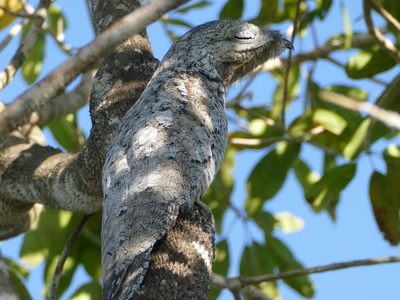
Great Potoo
This large nocturnal bird from Central and South America is a master of disguise. At night, it perches on a branch to catch flying insects in its enormous mouth, often emitting a haunting, guttural call.
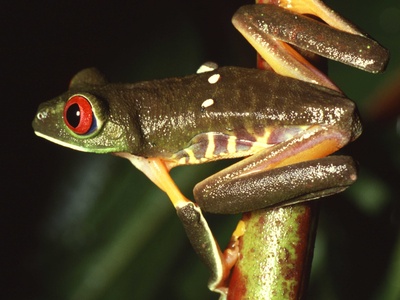
Red-eyed Tree Frog
An iconic amphibian of Central American rainforests, it sleeps on leaves during the day with its eyes closed and legs tucked in. At night, it becomes active, its vibrant colors on full display as it hunts insects.
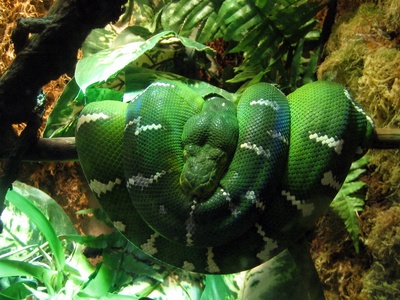
Emerald Tree Boa
This stunning, non-venomous snake from the Amazon rainforest has a vibrant green color that camouflages it in the canopy. It hangs from branches in an S-shape, waiting to ambush small mammals and birds that pass by.
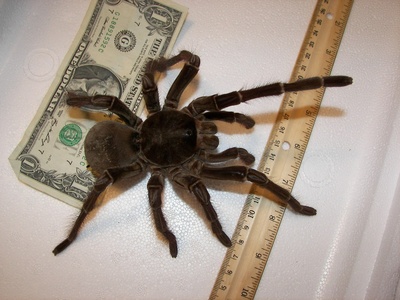
Goliath Birdeater
One of the largest spiders in the world, this tarantula inhabits the rainforests of northern South America. Despite its name, it primarily eats insects and small vertebrates like frogs and lizards, which it ambushes from its burrow.
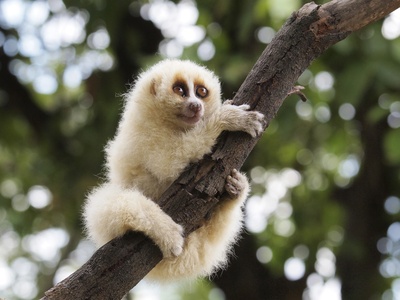
Sunda Slow Loris
This primate from Southeast Asia has a famously slow, deliberate climbing style. It is one of the few venomous mammals, delivering a toxic bite from a gland on its elbow mixed with saliva as a defense.
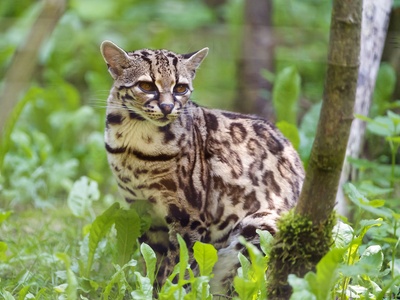
Margay
A small wild cat from Central and South America perfectly adapted for life in the trees. The margay is a skilled nocturnal hunter, preying on birds, monkeys, and lizards in the rainforest canopy.
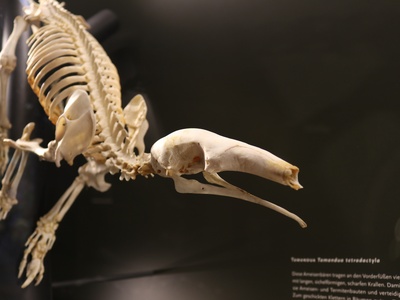
Southern Tamandua
This species of anteater from South America is semi-arboreal, spending time both in trees and on the ground. It uses its long, sticky tongue to feed on ants and termites, which it locates by smell in the dark.
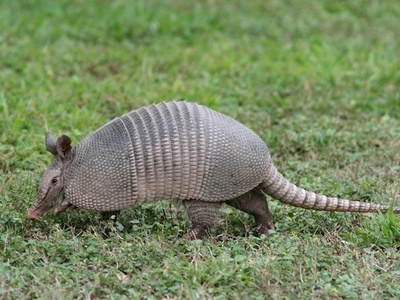
Nine-banded Armadillo
The only armadillo regularly found in the United States, its range extends through Central and South American rainforests. It forages at night, digging burrows and using its bony-plated shell for protection against predators like jaguars.
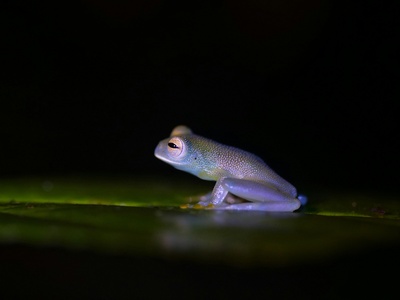
Glass Frog
This tiny frog from Central and South American rainforests is famous for its transparent belly, which reveals its internal organs. Males call from leaves overhanging streams at night to attract mates, and are fiercely territorial.
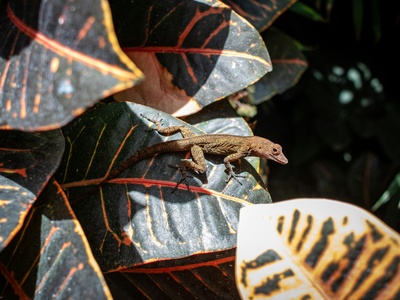
Satanic Leaf-tailed Gecko
Endemic to Madagascar’s rainforests, this gecko is a master of camouflage. It is active at night, hunting insects on the forest floor and in low vegetation, relying on its incredible disguise to avoid predators.
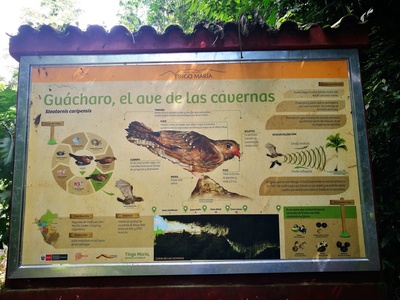
Oilbird
Unique among birds, the oilbird lives in caves in northern South America and Trinidad. It emerges at night in large flocks to feed on the fruit of oil palms, using a series of audible clicks to navigate.
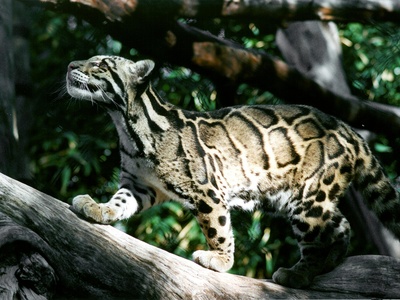
Clouded Leopard
A secretive and rare cat found in the Himalayan foothills and Southeast Asian rainforests. It is an exceptional climber, using its long tail for balance as it hunts monkeys and birds in the canopy at night.
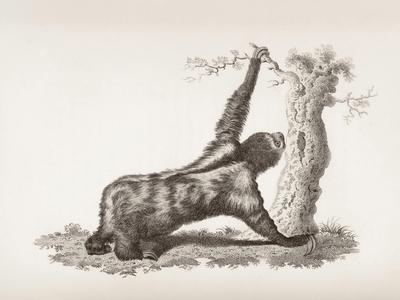
Goodfellow’s Tree-kangaroo
This striking marsupial lives in the canopy of New Guinea’s rainforests. Unlike its ground-dwelling cousins, it is adapted for life in trees, moving clumsily on the ground but with agility in the branches while foraging for leaves.
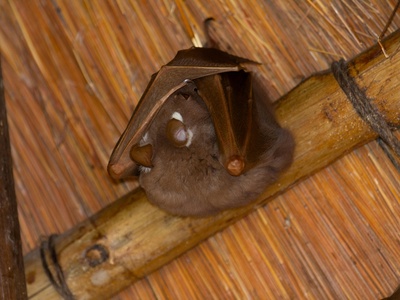
Hammer-headed Bat
The largest bat in mainland Africa, it inhabits tropical forests in Central and West Africa. Males gather in leks at night, where their bizarre-looking heads and large larynges are used to produce resonant mating calls.
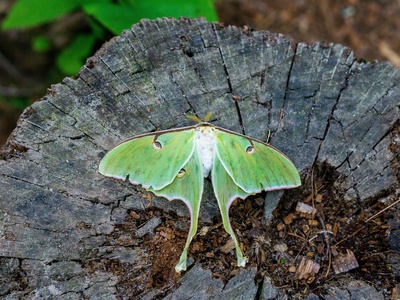
Luna Moth
One of the most spectacular moths, found in the forests of North America, including subtropical regions. Adults do not eat and live for only about a week, emerging at night solely to reproduce.
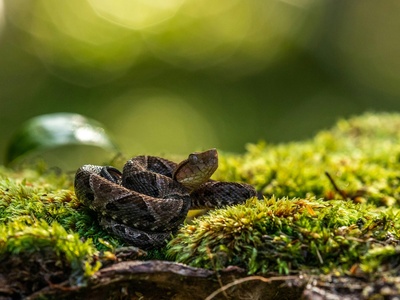
Fer-de-Lance
A highly venomous pit viper from the Amazon region, responsible for many snakebites. It is a nocturnal ambush predator, using its camouflage to blend into the leaf litter before striking rodents, frogs, and lizards.
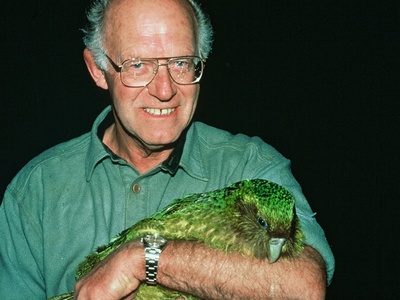
Kākāpō
A critically endangered, flightless parrot from New Zealand’s temperate and subtropical forests. This giant, mossy-green parrot is entirely nocturnal, climbing trees to forage for seeds, fruit, and pollen.
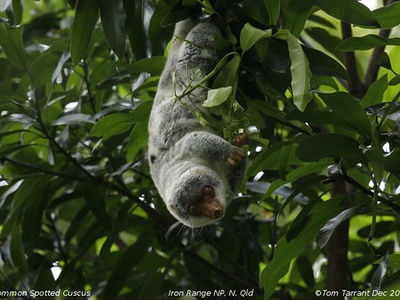
Common Spotted Cuscus
A slow-moving marsupial from New Guinea and surrounding islands, related to possums. It spends its nights foraging for leaves and fruit in the rainforest canopy, often sleeping during the day curled up in a tree hollow.
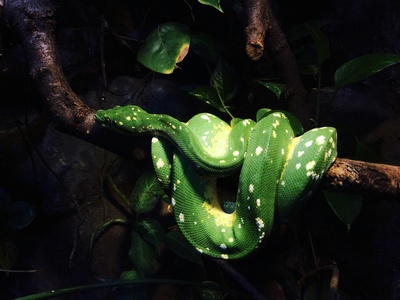
Green Tree Python
A vibrant green snake from New Guinea and northern Australia. Juveniles are typically yellow or red, turning green as they mature. It is an arboreal hunter, using its prehensile tail to anchor itself while striking.
